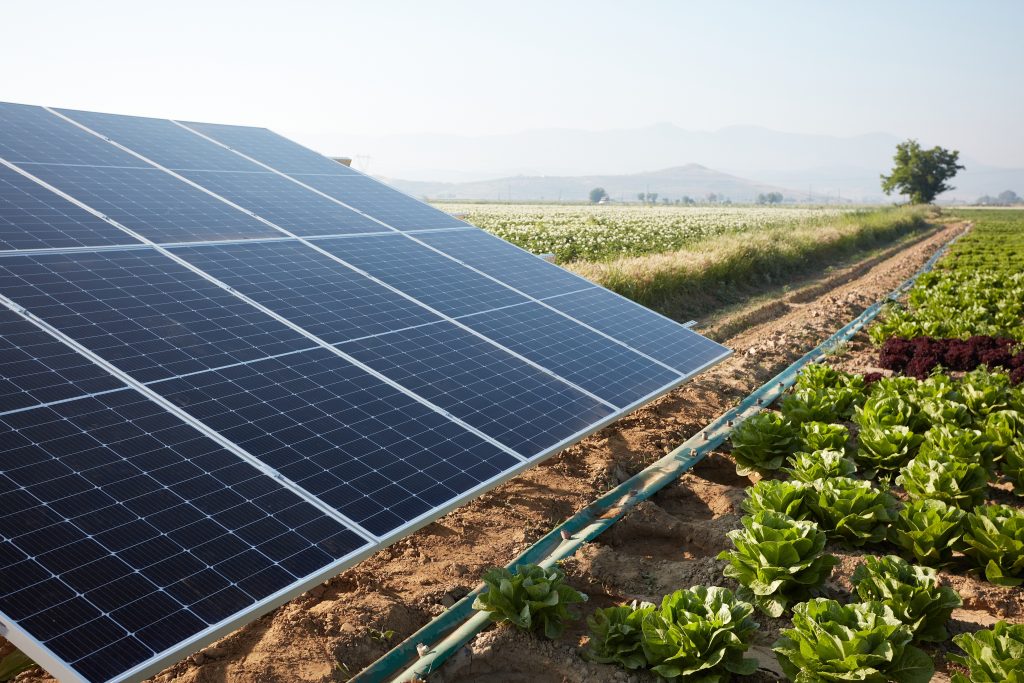Public funds alone can’t solve the climate crisis
Mafalda Duarte is the executive director of the Green Climate Fund. This essay is part of the Global Energy Agenda.
Financing climate action, particularly in the developing world, is a crucial investment in humanity’s shared future. We know, and the science confirms, that the world has a rapidly narrowing window to speed up and scale up investments in solutions that developing countries need for the future we all deserve.
But no one can solve today’s problems with yesterday’s thinking. This challenge demands twenty-first century approaches and partnerships. Equally important, the public and private sectors must work in tandem to meet the moment.
Governments and businesses alike should understand that investing in developing countries is a practical imperative. With rapidly expanding populations, the largest real gross domestic product (GDP) growth percentages, and rising demand for energy, developing countries are defining our collective prosperity and well-being.
These facts sum it up quite well. Our climate crisis originates from roughly forty wealthy economies’ industrial transitions. Meanwhile, 150 emerging economies, home to 97 percent of projected population growth, have not even begun or completed their own transitions.

Governments and businesses alike should understand that investing in developing countries is a practical imperative.
Low- and middle-income countries have the duty to meet the needs of their people, and it is the world’s collective obligation and interest to help them do so in harmony with our climate goals. Without international support to make greener investments, their development may rely longer than the science says it should on legacy energy sources and other investments that lock in unsustainable, carbon-intensive growth and cause a spike in carbon-dioxide (CO2) emissions.
Private financiers have a compelling economic motive to drive climate action. To reach net zero by 2050, the United Nations (UN) estimates that the world will need $90 trillion in infrastructure investments—a golden opportunity for companies around the world. Clean energy spending is moving accordingly, set to surpass $2 billion this year and overtake fossil fuel investment for the first time ever. Additionally, more and more communities are funding measures to build resilience to climate impacts.
While private capital flows for low-carbon and resilient investments are climbing, they are still woefully inadequate. Private investment in climate reached a recent high of $250 billion, less than 0.5 percent of the $90 trillion referenced earlier. Public sector entities like governments and multilateral institutions are deploying more—some $850 billion in 2021—but, taken together, this is still a drop in the ocean relative to scale of the challenge.
Additionally, most of these investments are still concentrated in developed countries. For instance, despite a clean energy finance gap of around $1.7 trillion annually, developing countries only attracted $544 billion in 2022, according to a UN report. The adaptation finance gap is even more alarming, recently estimated to be at least ten to eighteen times greater than current international finance flows.
The status quo is increasingly setting us off track. Financial institutions oversee some $510 trillion in financial assets. Institutional investors, like sovereign wealth funds and pension funds, hold an estimated $110 trillion under management. Unlocking even a fraction of those resources for climate investments would go a long way toward reducing emissions and safeguarding communities against climate change impacts.
To win the race against the climate crisis, we need trillions of dollars in investments—and all eight billion of us working as one to get there.
How can we attract more private investment where it counts the most? Private financiers are often deterred by barriers such as sovereign and currency risks or limited data and track records. These are serious obstacles, but they are not insurmountable with strategic partnerships and innovative finance mechanisms.
I lead the Green Climate Fund (GCF), the largest multilateral climate fund primed and uniquely positioned to steer private finance toward climate investments. GCF’s flexible, patient, risk-sharing, concessional capital enables private companies to enter new markets and new sectors, and to reap the benefits of investments they wouldn’t otherwise consider.
We mitigate perceived and real risks by sharing risk with private sector partners when entering new or incipient markets.
Our efforts are paying off. Private sector commitments comprise 36 percent of our portfolio, with $5 billion in direct GCF financing, which is enabling $22 billion in total investment from the private sector. Even better, 60 percent of these target the least developed countries, small island developing states, and vulnerable nations.
Our private partners span from Fiji Development Bank to Macquarie, Acumen, and Credit Agricole. In Kenya, for example, we’re working with Acumen to help thousands of farmers and local ventures access tailor-made financial resources, technical know-how, and new market opportunities. The result has been impressive. In Kenya, beneficiary farmers now sell about 400 tons of produce every month despite the challenges facing Kenya’s climate-sensitive agricultural sector, which contributes 20 percent to national GDP.
During a recent visit, I met Josephine, a coffee farmer, near Nairobi. With a solar-powered irrigation pump, she transformed her farmland, built a home, and now contributes significantly to her community. Funds like GCF bring the world community together to create millions of stories like Josephine’s, while safeguarding a future that belongs to all of us.
To win the race against the climate crisis, we need trillions of dollars in investments—and all eight billion of us working as one to get there. We do not have a moment to waste.
All essays
Related program

The Global Energy Center develops and promotes pragmatic and nonpartisan policy solutions designed to advance global energy security, enhance economic opportunity, and accelerate pathways to net-zero emissions.
Image: A lettuce field irrigated with solar energy in Turkey. A large area where lettuce is grown. Growing crops with rows of lettuce and renewable energy in a field on a sunny day. (Red Stock, Shutterstock)
